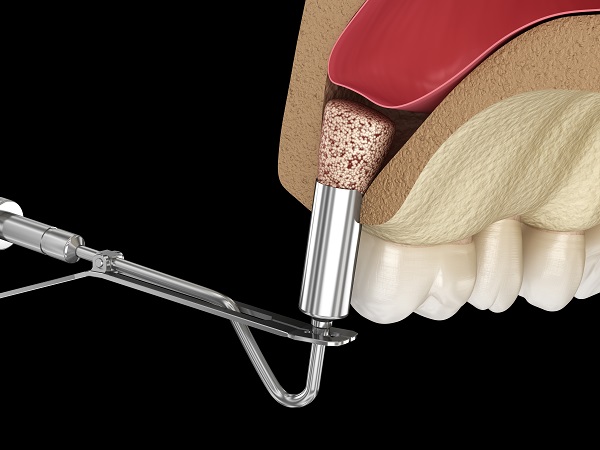Sinus Lift Procedure and Dental Implants

A sinus lift procedure is often necessary before the placement of dental implants to ensure a successful tooth replacement experience. This review highlights what patients can expect during a sinus lift procedure and when a dental professional may recommend a sinus lift before having dental implants placed in the upper jaw.
What to know about a sinus lift procedure before dental implant placement
A sinus lift procedure may be necessary for patients who have experienced bone loss in the jaw and do not have enough bone to adequately support implants. The procedure requires a specialist (i.e., an oral surgeon) to ensure the optimal safety and effectiveness of the results.
What is a sinus lift procedure?
A sinus lift procedure is a form of oral surgery in which bone is grafted in the upper jaw between the molars and premolars. This is done to ensure the successful placement and osseointegration of dental implants within the upper jawbone. The facial area in the upper jaw is a tight space, so to make room for the bone graft, the surgeon lifts the sinus membrane (hence the name).
When is a sinus lift procedure necessary for dental implants?
A sinus lift procedure may be necessary if there is bone loss in the upper jaw that prevents the ability to place the dental implants inside of the jaw. This is particularly the case if implants are being placed in the upper jaw around the area where the premolars and molars were. Without a sinus lift procedure to restore lost jawbone, the risk of dental implant failure is much higher.
How can I prepare for a sinus lift procedure?
The oral surgeon can provide detailed preparation instructions to ensure the patient is prepared mentally and physically for the surgical procedure. The bone that is used to replace the lost jawbone during a sinus lift procedure is taken either from another part of the body, from an allogenic bone, or from synthetic material. If bone is taken from another part of the body, then this typically takes place during the procedure.
What is the recovery process like?
The primary goal of recovery is to prevent infection. Subsequently, the surgeon may provide antimicrobial mouthwash, antibiotics, and oral care instructions. Patients are able to return home on the same day as the procedure once they are conscious and the effects of the anesthesia wear off. However, they are required to arrange for a ride home.
What is the next step in the dental implant process?
Once the mouth heals after the sinus lift procedure, then implant placement can be arranged, and the patient can continue with the established teeth replacement schedule.
Talk to our oral surgeon about the sinus lift procedure and dental implants
If you have questions about the sinus lift procedure or dental implants in general, then contact our oral surgery team today. We are glad to answer your questions, address your concerns, and arrange for a consultation visit to discuss the sinus lift procedure and dental implants.
Request an appointment here: https://spectrumsurgical.net or call Facial Spectrum at (816) 524-4334 for an appointment in our Lee's Summit office.
Check out what others are saying about our services on Yelp: Read our Yelp reviews.
Recent Posts
Infections after dental procedures occur frequently and that is primarily due to a lack of education on how to avoid it, however, with the help of an oral surgeon, infections can be avoided in a few ways. Oral surgeons are dental professionals who focus on invasive procedures that are necessary in order to treat or…
Your facial surgeon will prepare you well before your jaw surgery. This invasive procedure can improve your appearance and relieve your pain. It can also enhance your dental health. Here are the important details that your facial surgeon would want you to know before your jaw surgery.The upper and lower jaws are important in completing…
Clinical studies show that the dental implant remains the gold standard of dental restorations. Implants can help bring back your smile and dental function. The right dental professional can perform the procedure without any issues. Here are the details on how an oral surgeon approaches a dental implant surgery.Choosing a dentist who has training and…
A jaw surgery can bring back your smile and dental function. This procedure can restore your self-esteem. It can even open doors for new opportunities in your personal and professional life. Knowing more about this procedure can help you prepare for it. Here are the details on how jaw surgery can help bring back your…


